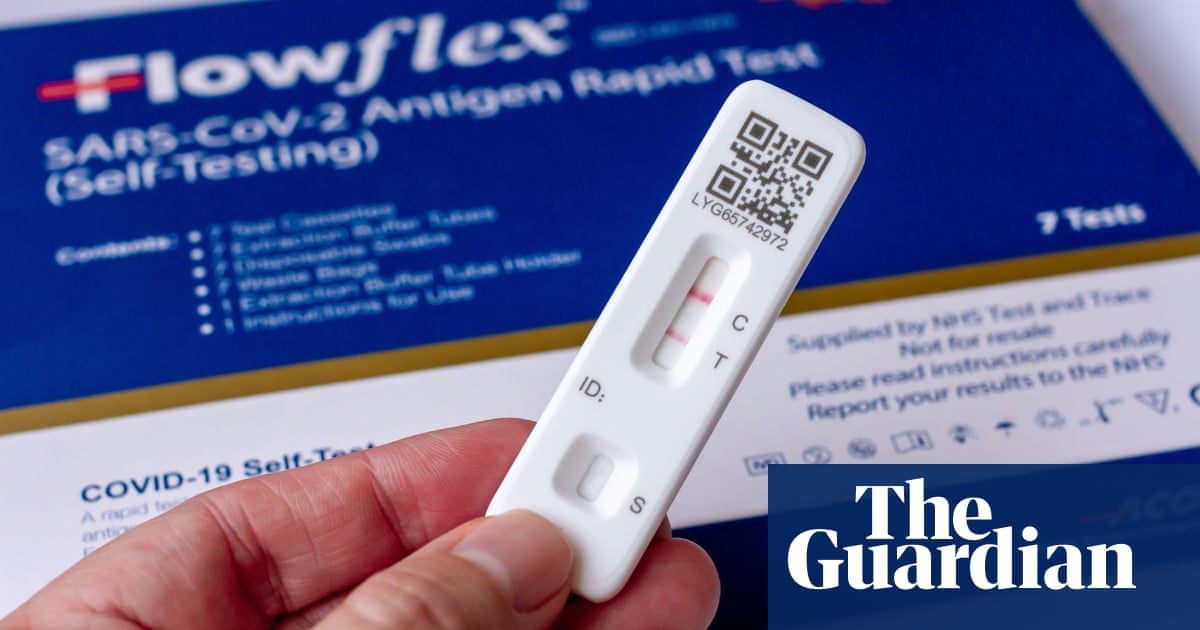
Ethnicity and deprivation have for the first time been recognised as risk factors for severe Covid in new modelling, which will lead to nearly 2 million more people in England being advised to shield and 800,000 being fast-tracked for vaccines.
The risk analysis tool, commissioned by the chief medical officer for England, Chris Whitty, from a team at Oxford University, takes into account a multiplicity of health conditions and circumstances that increase people’s likelihood of death, from obesity and severe mental health problems to homelessness.
The announcement prompted renewed calls from campaigners for black, Asian and minority ethnic groups to have higher priority for vaccination.
The race equality thinktank the Runnymede Trust called it a watershed moment. “Since March we have been pleading with Matt Hancock for race and deprivation to be considered as risk factors, and safeguarding measures to be implemented as a result,” said its chief executive, Dr Halima Begum. “The new measures are by no means a complete solution. In fact, they’re something of a halfway house. But they are a tremendously important step in the right direction and should be welcomed with open arms.
“By pulling together a trifecta of risk factors – ethnicity, social deprivation and body mass index – we offer a greatly expanded group of vulnerable people far higher levels of protection.”
The chair of the British Medical Association council, Dr Chaand Nagpaul, said the BMA had “long highlighted the fact that people from an ethnic minority background, especially with underlying conditions, are at high risk of death from Covid-19 and that those from poorer areas are also twice as likely to die from this terrible disease.
“Many of these patients fall outside of the current JCVI [Joint Committee on Vaccines and Immunisation] priority groups for the Covid vaccine, and so it is now vitally important that these patients are prioritised for vaccination and urgently protected against the deadly effects of Covid-19.”
Age is still the single biggest factor in the risk of dying from Covid, followed by certain cancers and organ transplants. But the more sophisticated modelling tool has shown that the shielding list should nearly double, adding 1.7 million people to the current 2.2 million who already isolate themselves at home. It was based on data from the health records of more than 8 million people during the first wave of the pandemic.
Among the many factors the model takes into account are ethnicity and postcode, which gives a measure of economic deprivation. There have been higher rates of death among people from black, ethnic minority and Asian communities and also people from poorer neighbourhoods with cramped housing. Body mass index will also be factored in, because obesity is known to increase the risk of severe illness.
All those newly identified will get a letter from their GP suggesting they shield until at least 31 March, which is later than the current date of 21 February. Most have already been vaccinated, because of their age or a particular health problem. The rest will now be prioritised as part of the group with underlying health conditions who are being called up.
Those affected are advised to stay at home full time and offered services such as delivery of their medicines. Statutory sick pay is available and those who shop for them can get priority at supermarkets.
Nagpaul said adding more people to the shielding list had to be carefully managed and they must be given information and support. “Understandably, this will be concerning for those who will now have to shield and may be questioning why, at this stage, they are being asked to do so, as well as having to manage fears over the implications for their lives going forward.
“It is also important the government works to mitigate the barriers that shielding presents for many, including those who are key workers, cash and gig economy workers, or those living in overcrowded housing and the knock-on effect this may have,” he said.
There has been a lot of concern about people with learning disabilities. Those with Down’s syndrome are already on the shielding list, but while more of these people may be prioritised, who should shield will also depend on factors such as whether they are living in institutional care.
The new tool, called QCovid, has been in development for some months by a team led by Julia Hippisley-Cox, a professor of clinical epidemiology and clinical practice at Oxford. The methodology underpinning it was published in October.
Dr Jenny Harries, the deputy chief medical officer for England, said the new tool enabled health workers to go further in protecting the most vulnerable in the community. “This new model is a tribute to our health and technology researchers. The model … will help the NHS identify further individuals who may be at high risk from Covid-19 due to a combination of personal and health factors.
“Those most vulnerable to Covid-19 can benefit from both the protection that vaccines provide, and from enhanced advice, including shielding and support, if they choose it.”
The national disability charity Sense welcomed the announcement. Its chief executive, Richard Kramer, said: “Today’s announcement provides clarity and reassurance to a wider group of people who have been at higher risk of severe illness or death from the virus. Many of these adults will already have been effectively shielding since the start of the pandemic, without sufficient recognition. It is right that they are prioritised for vaccination and additional support.”
The TUC’s general secretary, Frances O’Grady, said the government should tell employers that new shielders must be furloughed if they cannot work from home. “This will be a very worrying time for hundreds of thousands of working people. Some will be able to work from home, but others will not. These new shielders who can’t work from home must not lose their jobs and livelihoods overnight,” she said.












